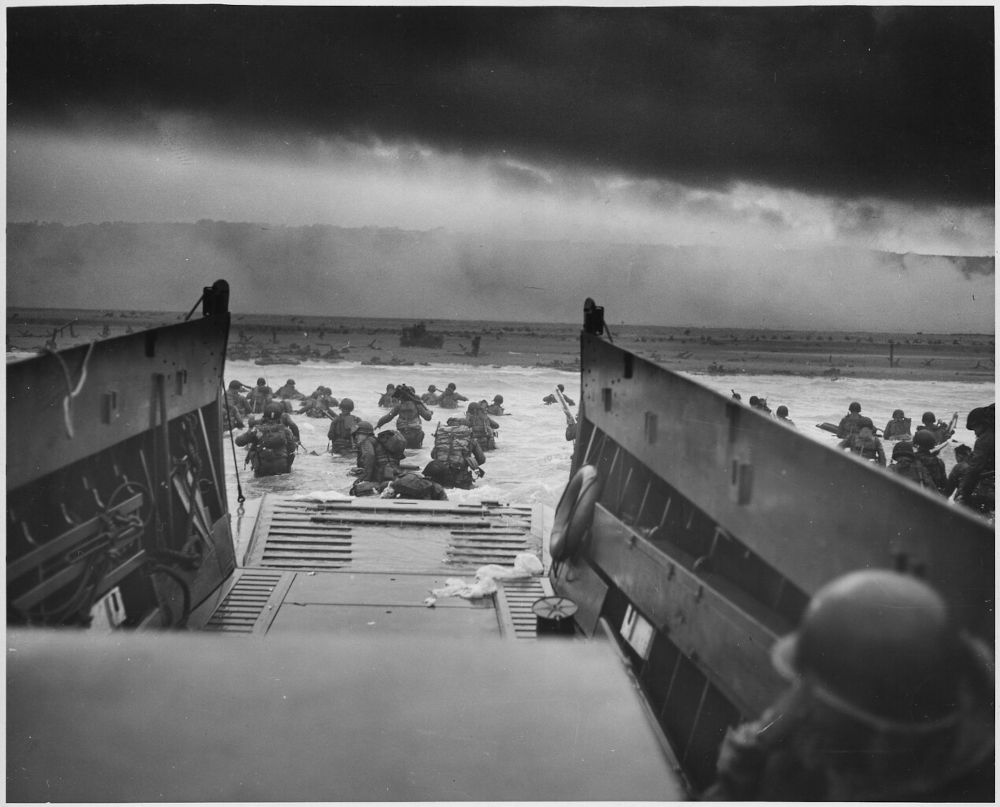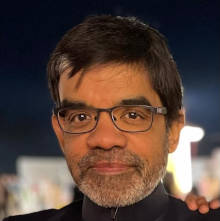[Into the Jaws of Death: Troops from the U.S. 1st Infantry Division landing on Omaha Beach during the Normandy landings, as photographed by Robert F. Sargent]
“Nuts!”
It’s the stuff of legend. Back in December 1944, when what came to be known as the Battle of the Bulge raged, US Brigadier General Anthony C. McAuliffe uttered that one-word response to a German demand for surrender. Since then, “Nuts” has come to symbolise American defiance in the face of adversity. It’s been immortalised in films from Battleground (1949) to Patton (1970) and Band of Brothers (2001), sold on merchandise (Nuts T-shirts go for $25), and, of course, it’s now a meme.
Still, even for those of us familiar with the tale, witnessing a reenactment of “Nuts” at a museum in Bastogne—a sleepy little Belgian town where the US Army halted Hitler’s last offensive—was something else. Reading about it or watching the dramatisations is one thing. But to stand where the US Army fought its costliest battle in all of WWII (around 90,000 killed, wounded, or captured) was to feel history come alive—with a sobering sense of what it demanded.
The 101st Ballygunge
Bastogne (pronounced “Basto-Nia”) was one stop on an 11-day ‘Battles of WWII’ tour I joined. Eight of us boys, no wives, all students of WWII—to varying degrees. We’d grown up in Calcutta. According to one of the wives, this explained the trip. (“Reverse snobbery,” she said. “You couldn’t just admit it was inspired by Zindagi Na Milegi Dobara.”) Back in our childhood during the days of Jyoti Basu, power cuts, and protest marches, we watched WWII movies at Globe and New Empire, devoured Cornelius Ryan, Willian L Shirer and Alistair MacLean; and swapped Commando comics. (I still read them on my Magzter app. The Germans always lose. The myth of them building Europe’s most fearsome fighting force? Please.)
“We were,” a comrade quipped, “the 101st Ballygunge.” He was, of course, riffing on the US 101st Airborne, who parachuted into Normandy on the night of June 5, 1944. By the next morning—D-Day—the Allied armada had landed and, by nightfall, secured a beachhead. Naturally, our own journey began there.
Freedom, Tyranny, and the Weight of Marble Crosses
Normandy offered a glimpse into what gives the US its conviction to speak of freedom from tyranny, the ideal of a confederation of democracies standing against authoritarian regimes, and trans-Atlantic alliance as an instrument of continuing peace. And why, until recently, many believed them.
They bled for it.

[Utah Beach, Normandy. Photo by Archangel12, CC BY 2.0, via Wikimedia Commons]
A three-hour drive from Paris, Normandy’s importance predates WWII. Centuries earlier, the Vikings settled here and these ‘northmen’ gave rise to the Normans who went on to conquer England.
But standing at the Normandy American Cemetery—with rows of white marble Latin crosses (and a few Stars of David), Omaha Beach in the distance, and the English Channel beyond—I thought only of the young Americans who died there 80 years ago. And for what?

[The American Cemetery at Normandy]
When WWII began, America wanted no part of it. It was Europe’s problem. President Franklin D. Roosevelt quietly began aiding the British through the Lend-Lease programme, but the American public was against joining the war. Then came Pearl Harbour.
Japan attacked Pearl Harbour on December 7, 1941, prompting the US to declare war on Japan the next day. Three days later, on December 11, Germany and Italy declared war on the US, citing US provocations and support of the Allies. A few hours later, the US Congress unanimously declared war on Germany and Italy.
Most of the young men landing at Omaha had never been outside the US.
Many things motivated the Americans (stories of Nazi atrocities, anger over Pearl Harbour, patriotism), but they also believed they were fighting for something larger: for justice and freedom and against tyranny and oppression.
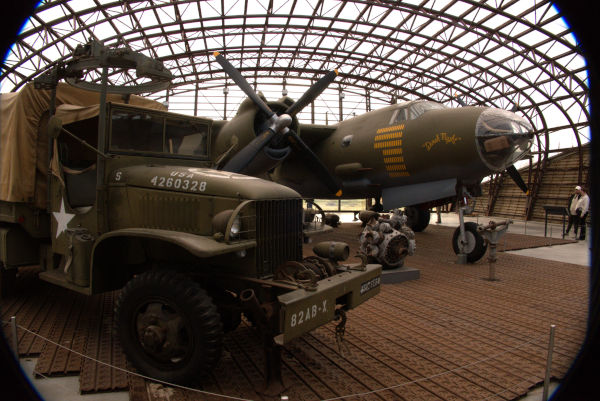
[At the Utah Beach D-Day Museum]
While after the war, the Allied cause came to be known as the “Good Fight” with its Biblical undertones (“I have fought the good fight; I have finished the race; I have kept the faith”, 2 Timothy, New Testament), at his State of the Union Address in January 1942, a month after Pearl Harbour, Roosevelt cast the war in moral terms: “We are fighting, as our fathers have fought, to uphold the doctrine that all men are equal in the sight of God. Those of the other side are striving to destroy this deep belief and to create a world in their own image—a world of tyranny and cruelty and serfdom.” The Americans weren’t just battling an enemy; there was something much bigger at stake.
The neat rows of white crosses in front of me were testament to that. On D-Day at Omaha alone, 3,600 Americans were killed or wounded. Average age: 22. Some were just 18.
Foxholes, Cratered Cliffs, and the Enduring Silence of Pointe du Hoc
We knew this trip would be like no other. And while there was the usual banter, and glasses of local beer and Aperol Spritz, our mood would often turn reflective and sombre.
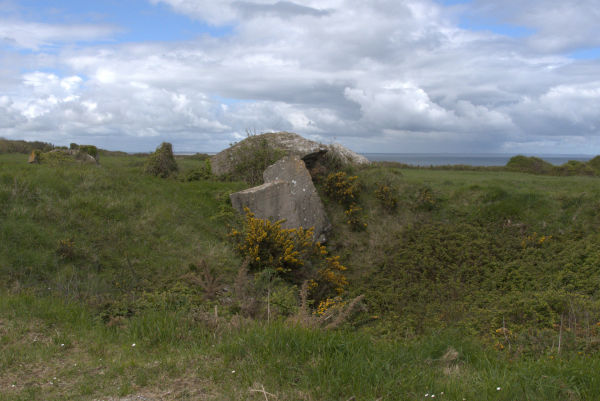
[Crater from bombing at Pointe du Hoc]
At Pointe du Hoc, a promontory on the Normandy coast, we saw the memorial to American Rangers who silenced a German position threatening both Utah and Omaha beaches. The German observation post still stood, as did the massive craters caused by Allied bombardment. What was poignant, though, were the photographs of those who died, displayed along a quiet walkway.
(The landings spanned 80 kilometers, across five beaches: Utah, Omaha, Gold, Juno, and Sword. The Americans landed at the first two; the British and Canadians stormed the others.)
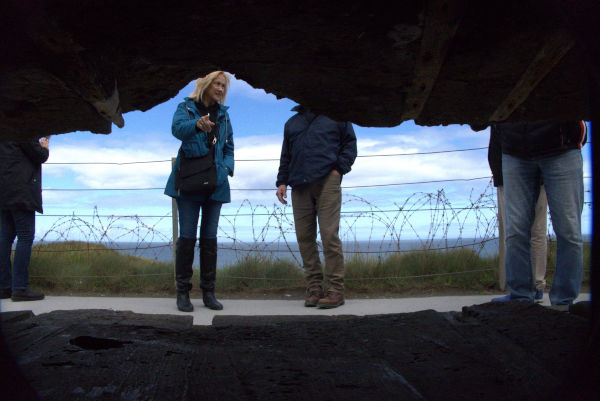
[View from inside the observation post at Pointe du Hoc]

[A foxhole where American soldiers took cover]
Beyond Bastogne, we visited a battlefield with preserved foxholes where American soldiers had taken cover under relentless shelling. Though eerily quiet now, it wasn’t hard to imagine the battle—the thud of artillery, the staccato rattle of machine guns, the frenzied screams of men killing men. “Thousands died here,” a friend remarked. “The ground we are walking on must be mixed with blood.”
History Hangs by a Bridge Too Far
In Nijmegen and Arnhem, in the Netherlands, we saw bridges central to Operation Market Garden—British Field Marshall Bernard Montgomery’s audacious, but ultimately doomed attempt to drop paratroopers behind enemy lines, seize control of bridges over the Waal (Nijmegen) and the Lower Rhine (Arnhem) and cut short the war. The original bridges were destroyed; what we saw were replicas.
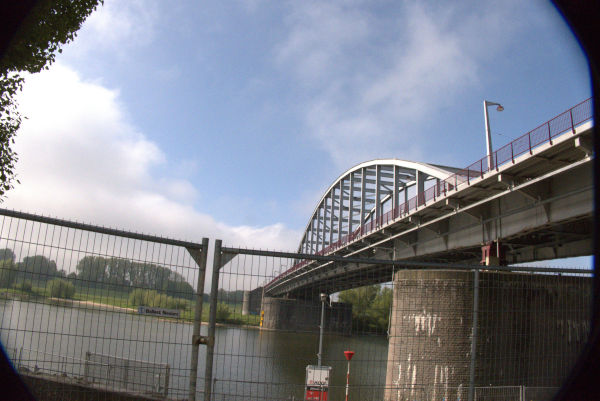
[The rebuilt bridge, John Frostbrug, at Arnhem]
And while cars passed, mothers carried babies, and contemporary life hummed, a memorial on a corner of the Arnhem bridge remembered the British soldiers who had tried to retake it from the Germans, and died doing so. A single wreath of poppies lay there. The bridge is now named after the officer who led them: John Frost.
Seven Against the Reich
Later, in Prague, we visited the crypt beneath the Cathedral of Saints Cyril and Methodius on Resslova Street. Here, seven Czech resistance paratroopers made their last stand in 1942 after assassinating Reinhard Heydrich, one of Hitler’s top lieutenants. Outnumbered and outgunned, three died in a gun battle; the rest took their own lives when the Nazis flooded the crypt.
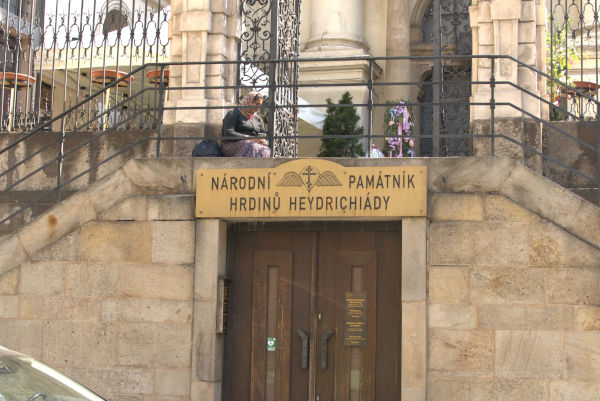
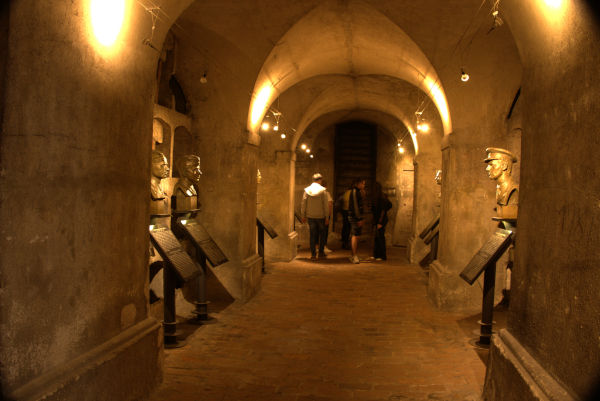
[Above: National Monument to the Heroes of the Heydrich Terror, at the Cathedral of Saint Cyril and Methodius. Below: An underground crypt, where seven Czech resistance fighters made their last stand, houses an exhibition]
Seven busts line the chamber now. Bullet holes remain in the walls. I counted ten. There are likely more..
Berlin’s Mirror: Remembering by Design
Nowhere was the concept of the Good Fight more sharply contrasted than in Berlin. If the Americans bask in the glory of what their Greatest Generation did (as do the British and others who fought on the Allied side), the Germans are not allowed to forget the sins of their forefathers.
As former West German Chancellor Willy Brandt, who won a Nobel Peace Prize for his efforts to bring postwar East and West Europe together once said: “No German is free of history.”
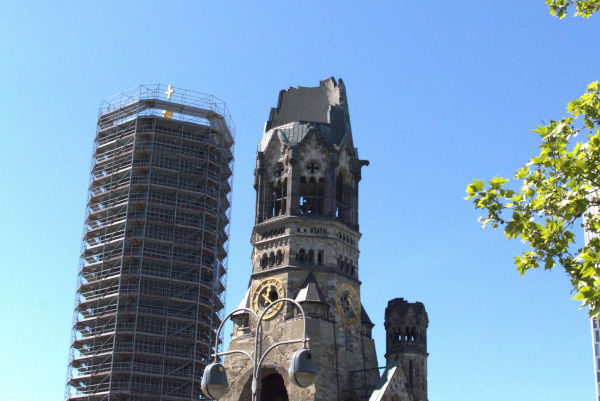
[The damaged spire of the Kaiser Wilhelm Memorial Church stands as a reminder of WWII]
Berlin illustrates this unflinchingly. Much of the city was destroyed and rebuilt, but remnants of its darkest past remain—by design. The Kaiser Wilhelm Memorial Church, bombed by the Allies, stands unrepaired. The site of the Gestapo and SS Reich Main Security Office—run first by Heydrich and later Heinrich Himmler, it was the most feared arm of the Nazis—now houses the Topographies of Terror museum, a permanent exhibition that details their reign of terror. Close by is the Memorial to the Murdered Jews of Europe.
At Humboldt University, 18 small brass plaques—stolpersteine, or stumbling stones—lie embedded in the pavement, each bearing a student’s name, birth date, the concentration camp he was sent to, and date of execution. Even bus stops serve as reminders. One displays the story of Adolf Eichmann and his atrocities, with the words “NEVER FORGET” in bold capitals. Next to this bus stop is the Hotel Sylter Hof. His office once stood there.
Auschwitz: The Sacred Weight of Horror
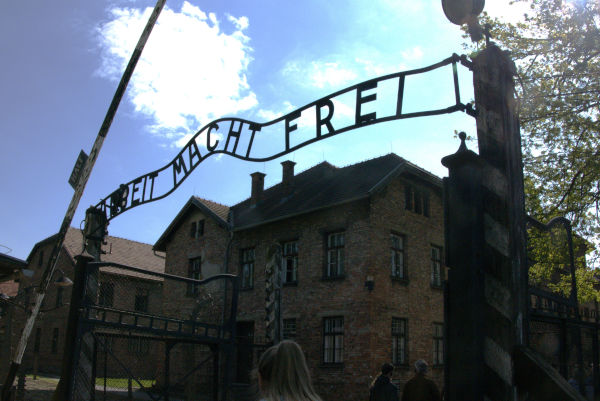
[Gate to Auschwitz I, the main camp, with the sign 'Arbeit macht frei' ("work sets you free")]
Perhaps the most telling symbol of Germany’s reckoning is the practice—though not mandatory—of sending schoolchildren to tour concentration camps. We did the same. At Auschwitz-Birkenau, the largest of them all, we saw groups of students. We couldn’t tell if they were German.
What we saw was worse than what we’d imagined. Over a million were murdered here—Jews, Poles, Roma, Sinti, Soviet POWs, and others. The gas chambers, the incinerators, the photographs of the victims with their date of birth, profession and date of execution, their personal effects—everything was displayed in painful, clinical detail. The Nazis were methodical.

[A gallery of the victims]
The lines were long. But amid the horror, I felt there was something solemn, something sacred. A collective grief. A silent reckoning.
At the end of the tour, I asked our guide if she felt dehumanised doing the tour over, and over, again. She replied it was difficult—but necessary. “Somebody has to show the world how far man can fall.”
I told her it sounded rehearsed.
She shot back, “I grew up here. I know.”

[Birkenau]
Germany’s commitment to acknowledging its Nazi past, to confronting and atoning for it, has won it global respect. Compare that to Britain, which still struggles to grapple with its imperial history—justified for too long under the banner of Empire and Raj.
The Past Is Not Past
At the end of this journey, I asked myself: Have we truly learned anything from our past?
Our trip unfolded as wars flared across the world. Some of today’s conflicts involve nations that fought in WWII—some even as victims. But the lessons of that war seem to be forgotten.
Revisiting history doesn’t secure the future. It merely alerts us to the danger of how terrible it may just turn out to be.
